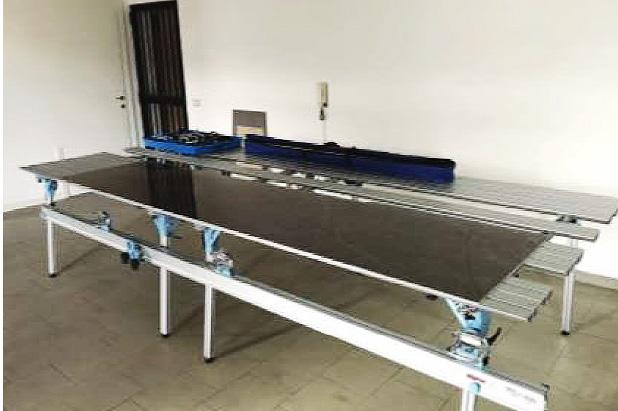
4 minute read
10-11 Laying of large format tiles
3 Cutting and Drilling of Tiles
For the correct success of linear cuts it is necessary to support the tile with a solid worktop like the Sigma WORKBENCH.
For work safely, use the following personal protective equipment: 3. Fix the cutting rail on the tile clamping the suctions cups. scored line to the edge of the table, then snap the tile with the appropriate nipper. CUTTING: SCORING/SNAPPING For linear cuts: scoring / snapping use the KERA-CUT cutting rail.
1. Place the tile on the workbench.

2. Mark with a pencil where the cut should
come on both sides of the tile.


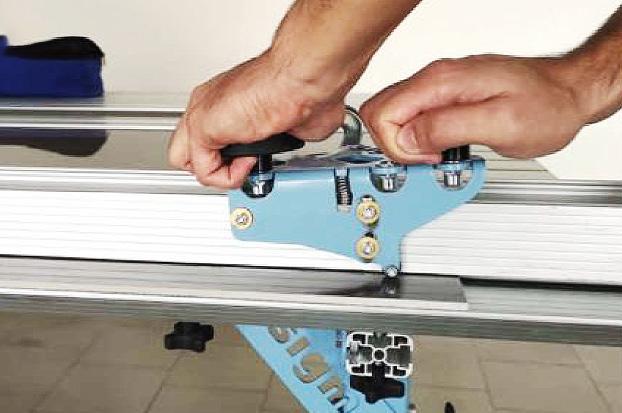
4. Score the end of the tile 3/4cm back from the inside to outside, then score it along its entire
5. For snapping the tile you simply move the length while maintaining a constant pressure.

6. Complete the snap by pressing gently downards.
SAWED CUTTING: For linear saw cuts it is suffici t to use the cutting system KERA-FLEX which sliding on the cutting guide KERA-CUT allows cutting (even partial) of the tile up to a maximum thickness of 30mm KERA-FLEX is also suitable for creating large pockets or opening in the tile. remove the scoring carriage and replace it with the KERA-FLEX. 3. Adjust the cutting depth stop. clean the cut edge with a finishing diamond pad For tile thickness up to 6mm it is recommended to use a continuous row disc, over 6mm is recommended a turbo disk.
1. Place the KERA-CUT rail on the tile, Use personal protective equipment:


2. Insert the vacuum cleaner pipe for the total


5. At the end of the process it is possible to dust extraction. 4. Proceed with cutting the tile.
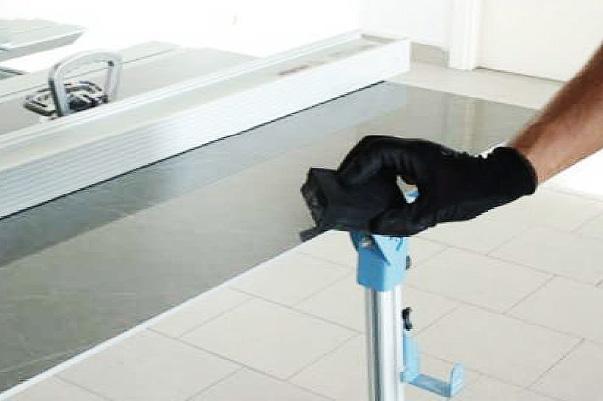

6. At the end of the process it is possible to clean the cut edge with a finishing diamond grinding wheel.
DRILLING: For the execution of rectangular holes or pockets it is important to make four holes (ø minimum 8mm) in each corner to avoid excessive tension to use the Sigma drill bit.
1. Adapt the workbench by moving the planks and create an empty space for drilling holes. pockets is important to make four holes (ø minimum 8mm) in each corner to avoid excessive tension. Use personal protective equipment:
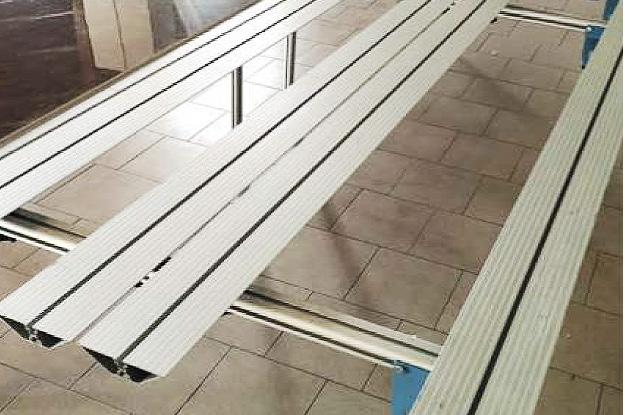
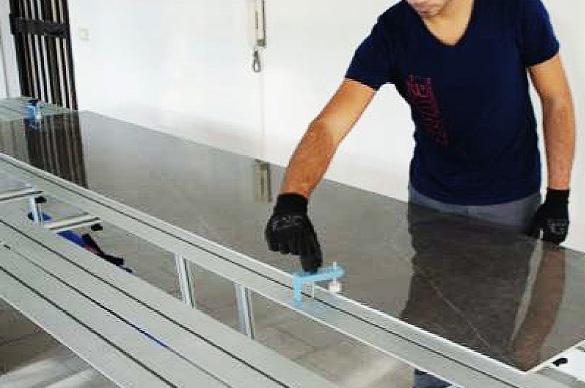
2. Fix the tile with the clamps by positioning the area to be worked in the empty space of the workbench.
3. Start the hole by tilting the drill bit.


4. Continue drilling with oscillating movement without pushing excessively,
5. For the execution of rectangular holes or cooling the drill bit with water if necessary.

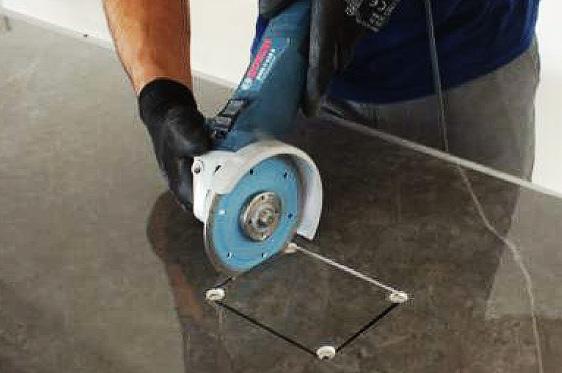
6. Then use a continous crown disc for cutting the sides.
TYPES OF CUTTING: During the processing of the tiles we will be in front of various processes, including linear cuts, “L” cuts, rectangular holes etc. The cuts can be done thanks: - Sawn cut (obtained through KERA-FLEX or manually) - score/snap cut (obtained through KERACUT) For every processing there can be many solutions, it is up to the operator to choose which operator, here are some examples.
In case of realizing an “L” shape of the tile is to be made, proceed as follows:
Option 1 1 o Hole 2 o Sawn cut - - - - 3 o Score / snap cut _________
Option 2 1 o Hole 2 o Sawn cut - - - - 3 o Score / snap cut _________ In case of realizing an “U” shape of the tile is to be made, proceed as follows:
Option 1 1 o Hole 2 o Sawn cut - - - - 3 o Score / snap cut _________ Option 2 1 o Hole 2 o Sawn cut - - - - 3 o Score / snap cut _________
In case of realizing an rectangular pocket on the tiles is to be made, proceed as follows:
Option 1 1 o Hole 2 o Sawn cut - - - - Option 2 1 o Hole 2 o Electric cut - - - - 3 o Score / snap cut _________




